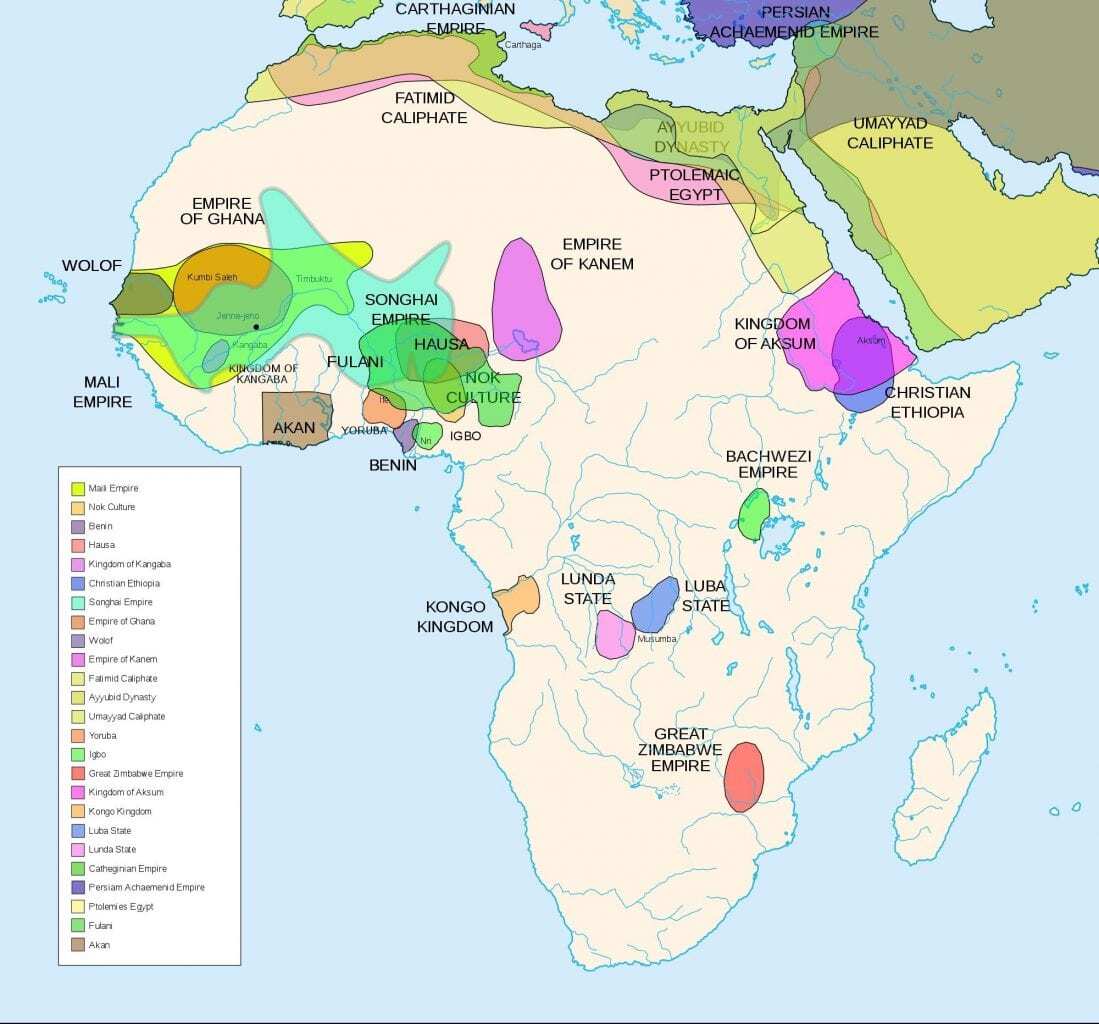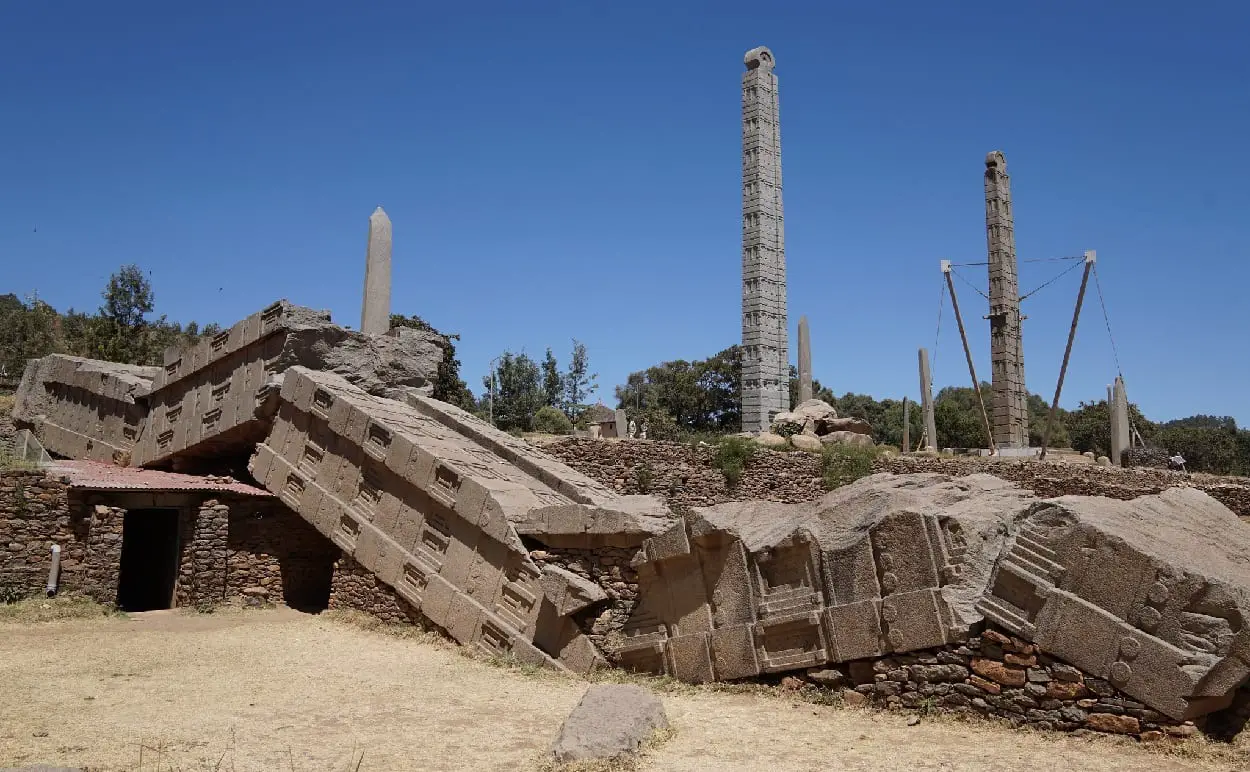The Aksumite Empire was an ancient kingdom that existed in Ethiopia from AD 100 to 940.
Centred on the ancient city of Axum/Aksum, the nation grew from the proto-Aksumite Iron Age period around 400 BC to its height around the 1st century AD.
At this time, the empire extended across most of present-day Somalia, Ethiopia, Djibouti, Sudan, Eritrea, Yemem and even Saudi Arabia.
Aksum became a major commercial player in the trade routes between the Roman Empire (Later the Byzantine Empire), India and the Mediterranean – exporting ivory, tortoiseshell, gold, emeralds and minerals.
The Manichaein Prophet Mani (AD 216 – 274) even regarded Axum as one of the four great powers of his time, alongside Persia, Rome, and China.

Aksumite Culture
The Empire’s population was a mix of Semitic speaking people or Habeshas, Cushitic speaking people and the Nilo-Saharan speaking people.
Despite the linguistic complexities, Aksum developed its own alphabetic system called the Ge’ez script (also known as Ethiopic) that was later modified to include vowels, becoming an abugida segmental writing system.
The Empire practised a polytheistic and Judaic religion, possibly worshipping gods such as Astar, Beher, Meder/Medr, and Mahrem, but later adopted Christianity around AD 325 under the Emperor Ezana.
The wealth of Aksum was certainly represented in the architectural legacy of the Empire, from the giant Stelae obelisks to the ornate palaces left behind.
The stelae served to mark graves, often decorated with false doors and windows to represent a magnificent multi-storied palace. The largest of these towers discovered would have measured 33 metres high and was held up by massive underground counterweights.
Decline
After a second golden age in the early 6th century, the empire began to decline, eventually ceasing its production of coins in the early 7th century. Around this same time, the Aksumite population was forced to go farther inland to the highlands for protection, abandoning Axum/Aksum as the capital.
Eventually, the Islamic Empire took control of the Red Sea and most of the Nile, pushing Aksum into economic isolation. As international profits from the exchange network it had developed over centuries declined, Aksum lost its ability to control its own raw material sources and that network collapsed.
The pressure maintaining a large population meant a high level of regional food production had to be intensified. The result was a wave of soil erosion that began on a local scale c. 650 and attained catastrophic proportions after AD 700.
The Aksumite Empire ended with the last King, Dil Na’od who was defeated by his former General Mara Takla Haymanot who founded the Agaw Zagwe dynasty.
According to legend, a son of Dil Na’od fled in exile, until his descendants overthrew the Zagwe dynastic rulers and re-established the Solomonic dynasty around AD 1270.
The end of the Aksumite Empire didn’t mean the end of Aksumite culture and traditions; the architecture of the Zagwe dynasty at Lalibela and Yemrehana Krestos Church shows heavy Aksumite influence.
Header Image Credit : schizoform – CC BY 2.0





